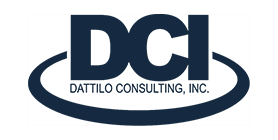
10 Nov Health insurance premium increase moderate – for now
But today’s premiums are the starting point
By Grant Dattilo
“Well, how much have our health insurance premiums gone up this year?” employers ask at renewal time. Fact is, employers across Minnesota are frustrated that their group health insurance premium costs go up each year.
Today, employers need to explore emerging trends in health care prices and spending. The right strategy today can save a large amount of money tomorrow.
Minnesota rates
What is happening in Minnesota? “…the individual and small group health insurance plans in Minnesota reflect increasingly stable markets, even as the state continues to battle the COVID-19 pandemic,”[i] the Minnesota Department of Commerce recently announced. The Commerce Department reported an average of 3.1 percent in premium rate increases[ii] for 2021 across eleven insurance carriers.
Certainly, a small increase on top of costly premiums is welcome news, but for employers already struggling to afford premiums, any increase is a burden. According to the Kaiser Family Foundation, in 2020 small group employers pay on average, $20,438 for family coverage. Large employers pay even more – $21,691. Small employers are spending an average of $7,483 for individual coverage with large employers paying slightly less — $7,466.[iii] [iv]
Premiums have spiked higher each year since the passage of the Affordable Care Act of 2010. “The average premium for family coverage has increased 22% over the last five years and 55% over the last ten years [emphasis added]”[v] Kaiser reports.
The good news is, then, that at least the 2021 Minnesota rate increases are moderate. This rosy statement, however, does not account for COVID-19 factors affecting spending that have held premium increases down.
These current moderate premium increases may give way to significant increases for 2022. Increased spending related to delayed medical care and complications because of the shutdown of “elective” medicine during the early COVID-19 pandemic, are going to eventually catch up to premiums. Delayed treatment for undiagnosed medical conditions points toward a large premium increase in the near future.
Understanding premium cost drivers
Employers are looking for strategies to stabilize and reduce health insurance premiums now. They understand that health care spending drives premiums, and that the price of health care services continues to increase. As prices and volume increase, it drives insurance premiums higher.
In 2020, the Rand Foundation published results of its third study about the price of health care paid by private, commercial insurance. Rand found on average, when private insurance pays the bills, hospitals and medical professionals receive 247 percent of Medicare as payment in full for their services.[vi]
What this means is that for the same service, if Medicare pays a hospital $10,000, the employer’s insurance is paying $24,700 – 247% of Medicare. On a major claim, if Medicare pays the hospital $100,000, private insurance will pay on average $247,000.
The plain truth is that employers and employees pay far more for care because Medicare pays far too little. The 247% of Medicare cost acts like a tax on private health care, and worse yet, the patients have been unable to know the price of care until after it has been completed. No employer could stay in business if their customers never knew the price of a product until months later. That is, however, how health care has worked for decades (the Trump Administration has been releasing rules changes to create more price transparency – good news for employers).
As for price trends, the Rand study showed an average increase in the price of health care of more than 10 percent between 2016 and 2019.
Clearly, employers need to begin to take corrective action now, and set out a long-term strategy to hold down inevitable future premium increases. At Dattilo Consulting, we offer the BENIC Plan, and increasingly, we are designing plans using Level Funded Insurance. We’re beginning to point toward Reference Based Pricing (RBP) Plans as the next and most successful idea to reduce premiums. Each of these ideas are based on a better, simpler price transparency process.
[i] Staff. “Commerce Releases 2021 Health Insurance Rates for Minnesota.” Minnesota Department of Commerce, October 2, 2020. https://mn.gov/commerce-stat/pdfs/2021%20Press%20release_2021%20insurance%20rates_PDF_v04.pdf.
[ii] Based on 11 company’s raw increases, not on average weighted by the volume of health plans per carrier. One carrier, Quartz (formerly Gunderson, with a small enrollment) reported a 1.6 percent reduction.
[iii] Claxton, Gary, Matthew Rae, Gregory Young, and Daniel McDermott. “2020 Employer Health Benefits Survey.” KFF (blog), October 8, 2020. Page 6. https://www.kff.org/health-costs/report/2020-employer-health-benefits-survey/.
[iv] These are all national averages. Numbers vary widely in different locales.
[v] See Note iii. Kaiser.
[vi] Whaley, Christopher, Brian Briscombe, Rose Kerber, Brenna O’Neill, and Aaron Kofner. “Nationwide Evaluation of Health Care Prices Paid by Private Health Plans.” Rand Corporation, 2020.

